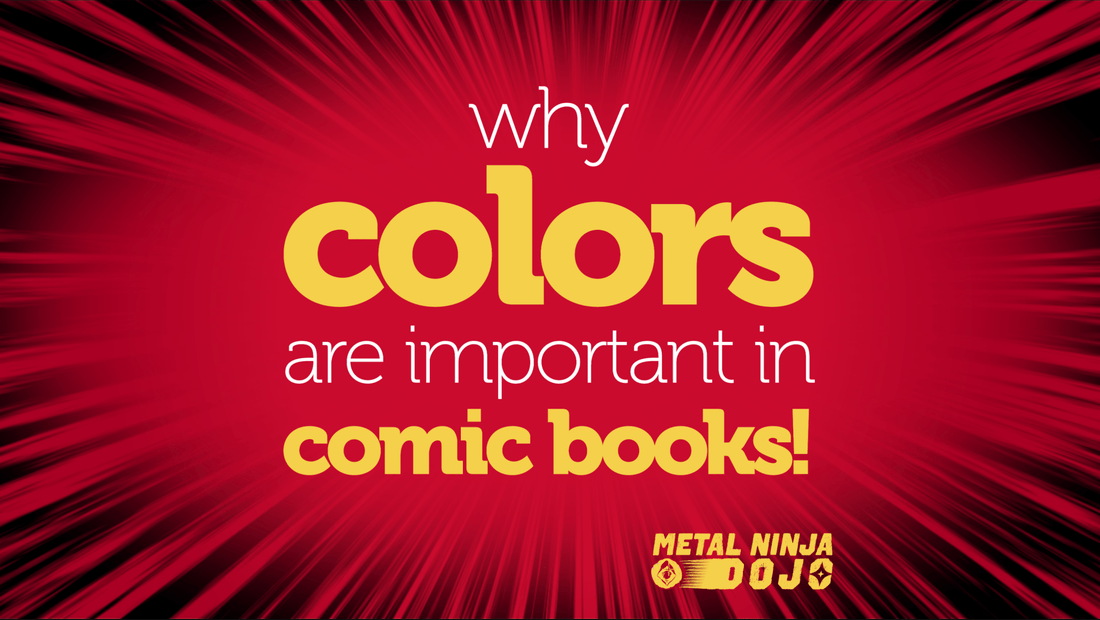Why Colors Are Important In Comic Books
by Travis Gibb
I recently hired a colorist for a project, and we were debating the price per page. I had a budget, they had their price, and we were trying to meet in the middle. I find this often happens when I am looking for a colorist because the price from one colorist to the next can sometimes be very drastic, so figuring this out can sometimes be challenging. I never want to tell an artist what they are worth. However, I have a budget, so I would rather tell them what I can afford and see if we can work it out.
Picking the right colorist for a comic can change everything about a project. I feel that the quality of the art is either enhanced or declined based on the colorist. With that in mind, and with the support of Metal Ninja Studios, I come to you with…
Why Colors are Important in Comic Books!
Now, I know that a good black-and-white book can do this too, but let's be honest: there is a reason that 90% of Western comics in the market are in color. Colors are the flashy billboard that brings it all together, making each page pop and bringing your attention to every single panel's detail. They help relay information quickly and, honestly, make some pages way cooler by adding dynamic color tones.

Do you know how a rainy day feels different from a sunny one? Colors do that in comics. They set the vibe and control the mood of the reader. A superhero comic might be all bright and bold, while a crime and horror book could be darker and more mysterious. It's like the comic's way of telling you, "Get ready for some action," or "This is gonna be scary!" It's all done by the choice of a color pallet.
Colors help us give details that gray shading can’t exactly get done. If someone is Spanish, for instance, with gray shading, it's hard to tell the difference in a city setting, but colors help change that and make it clear. Yes, you could do this with dialogue, but then it's more forced. Color is a great way to naturally give information to the reader.
As a storyteller, you need all the tools you can get to make your story the best it can be. Colors are an additional tool for storytelling. They can be used to distinguish between different settings, time periods, or even different realities within the same comic. It's a tool that I use in every book I write. Specific colors or color schemes can also be associated with certain characters, helping readers easily identify and connect directly to the audience.

Ever seen those comics where certain things just draw your eye to it? For example, Spider-Man swinging through a city with a red and blue costume helps him stand out (it's why red and blues work so well in comic books). That's colors doing their thing. They make important stuff pop and draw your attention so you don't miss a beat.
To wrap this up, colorists in comics are just as important as the artist when it comes to picking one for your upcoming comic book. They make everything pop, set the mood, and keep the story flowing. Focusing on the vibe/tone of the book should help you determine who to hire. Some colorists are great at dark tones; others are great with vibrant palettes. They all have strengths and weaknesses, so pick wisely.
Keep an eye out for my next blog, as I’ll be writing about flats versus full colors. They both have strengths and weaknesses, but we’ll get more into that in a couple weeks when I give you proper context and detail.
Keep creating!

